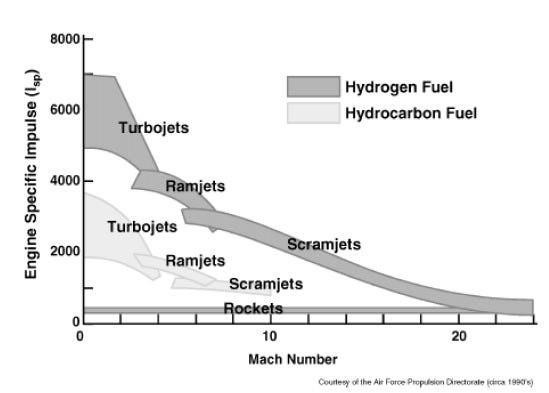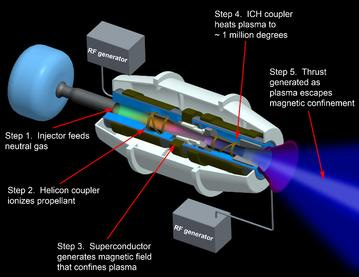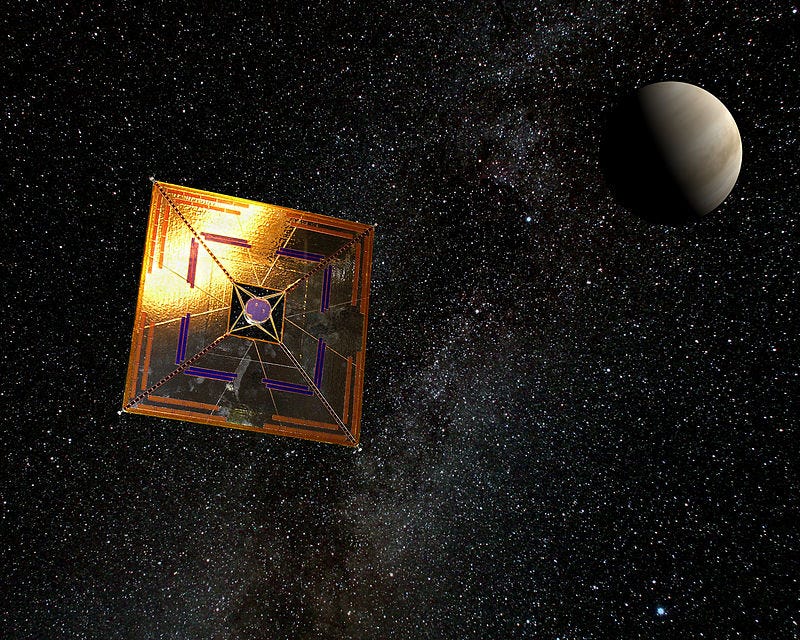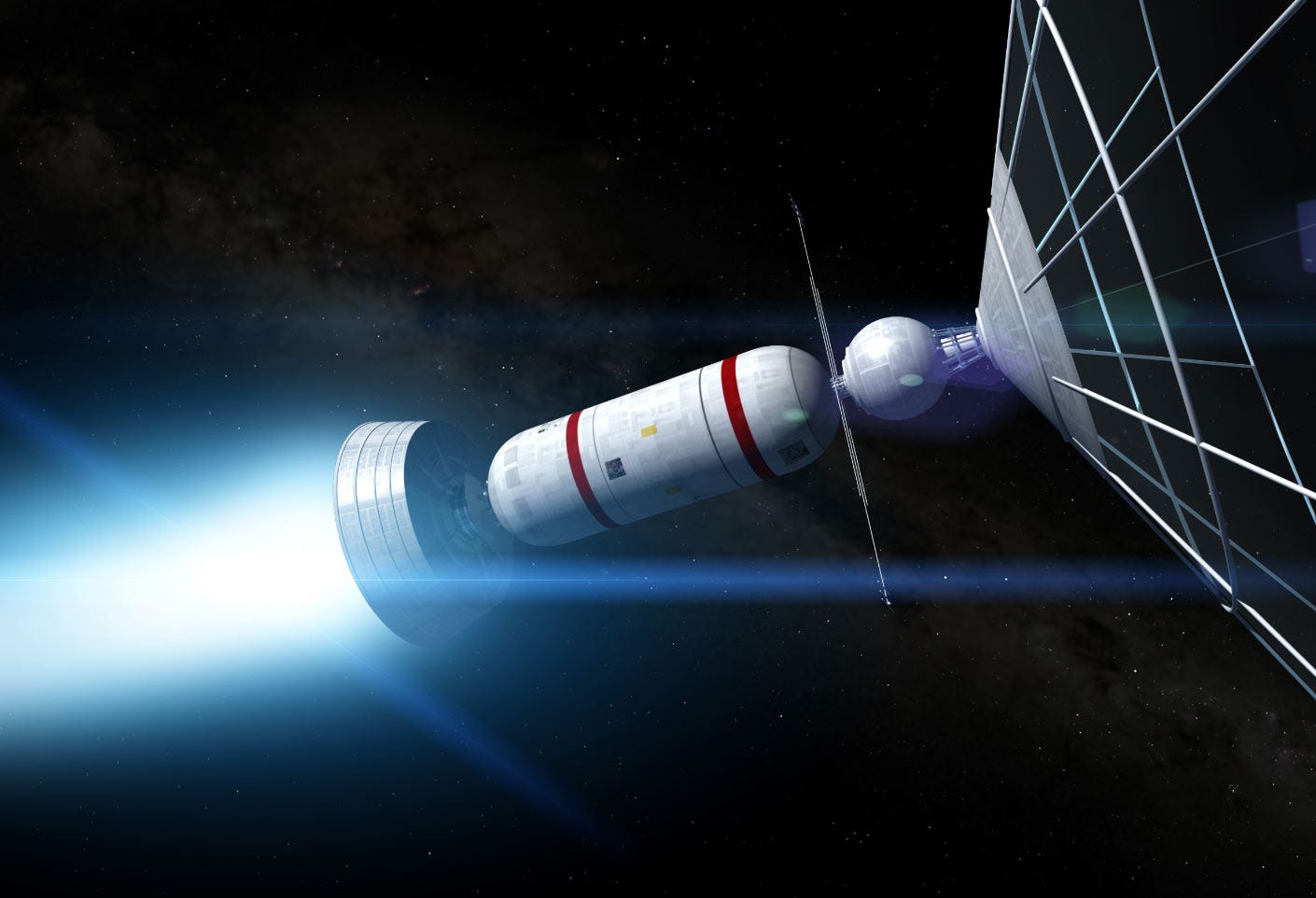If aliens visit us, the outcome would be much as when Columbus landed in America, which didn’t turn out well for the Native Americans. - Stephen Hawking
Greetings, fellow Bohron
Like you, I and every other thing in the universe, the end of Earth is inevitable. There are several possible reasons why Earth would die: asteroid impacts, dried forests, violent volcanic eruptions, another world war among humans or war with aliens, or the death of our Sun (which is the most probable cause of Earth’s demise in future).
So what is our ultimate fate? One day we must leave the Earth or die.

The nearest star system, Alpha Centauri, is about 4.4 light-years. It would take roughly 6,300 years to get there with existing technology. But we haven’t been farther than nearly 400,171 km away from Earth, a feat achieved by the Apollo 13 crew, when they swung around the far side of the moon on April 14, 1970.
So let’s understand the physics behind interstellar travel and look at the prospects of spacefaring.
Specific Impulse and Engine Efficiency
The efficiency of various engines can be compared on the basis of their “specific impulse”. The higher engine efficiency implies that lesser fuel is necessary to boost a rocket into space.
Specific impulse is a measure of how efficiently a reaction mass engine creates thrust. It is defined as the change in momentum per unit mass of propellant. It is measured in seconds.
A chemical rocket despite having a large thrust can operate for a short period of time, so they have a very low specific impulse. On the other hand, an ion engine has a very low thrust but can operate for years and hence has a high specific impulse. The maximum possible specific impulse would be a rocket that could attain the speed of light.

Undoubtedly, we need a highly advanced rocket design if we are to ever reach the stars. Let’s take a look at some of these technologies.
Ions and Plasma Engines
Unlike chemical rockets, which produce the sudden, explosive burst of superhot gases, ion engines lack the powerful thrust required for propulsion. However, ion engines can operate for a longer duration, even for several years, which is why they are superior to conventional rockets.
An ion engine consists of a hot filament which heated by an electric current. The ion thruster ionizes a neutral gas by extracting some electrons out of atoms, creating a cloud of positive ions. This beam of ionized atoms is ejected from one end of the rocket forming a thin but steady flow of ions.

Launched in 1998, Deep Space 1 was the first NASA spacecraft to use ion propulsion using NASA Solar Technology Application Readiness (NSTAR) ion thruster. It operated for 678 days, a then-world record. NASA’s Dawn and DART space probes, ESA’s Smart 1 probe, and JAXA’s Hayabusa space probe all are being operated using ion engines.

An advanced version of ion engines is known as a Plasma engine, such as the VASIMR (VAriable Specific Impulse Magnetoplasma Rocket) which is currently under development.
A brainchild of American mechanical engineer Franklin Chang-Diaz, VASIMR uses radio waves to ionize and heat hydrogen gas to a million degrees centigrade. The so-formed plasma is then confined and accelerated using a magnetic field, forming a powerful jet of plasma and hence generating thrust.

Although plasma engines are not much powerful, some engineers hope that they would reduce the travel time to Mars from 2.5 years to a few months. However, none of the ion or plasma engines is capable enough of taking us to the stars. We certainly need a whole new design to achieve our dream.
Solar Sails
More than 400 years ago, German astronomer Johannes Kepler proposed the utilization of “solar wind” to propel ships through space. His dream has already been fulfilled, though in a modified form. In 1873, James Clerk Maxwell first demonstrated that sunlight exerts a small amount of pressure as photons bounce off a reflective surface. This pressure forms the basis of all modern solar sail designs.

A solar sail consists of large reflective sails that capture the momentum of sunlight and use it to push the spaceship ahead. When directly facing the Sun, photons push the solar sail forward, away from the Sun. The spacecraft can be moved in other directions by altering the angle of the sail relative to the Sun.

Traditional spacecraft use rocket fuel to propel them through space. More rocket fuel means more mass, which is a major roadblock in the spacefaring industry. On the other hand, a solar sail can be propelled as long as there is light to push it. This way, the spacecraft can be accelerated to speeds unreachable by chemical rockets.
Launched on 20 May 2010, JAXA’s IKAROS (Interplanetary Kite-craft Accelerated by Radiation Of the Sun) was the first successful practical solar sail spacecraft. Cosmos 1 was a project by Cosmos Studios and The Planetary Society to test a solar sail in space, launched on 21 June 2005. A rocket failure prevented the spacecraft from reaching its intended orbit.

The most promising solar sail project currently under development is LightSail. LightSail 1 was launched on 20 May 2015. Although reported as a success, contact with the spacecraft was lost a number of times. LightSail 2 was launched on 25 June 2019 and vows to learn from the failures of its predecessor.
Ramjet Fusion Engine
Hydrogen is the most abundant gas in the universe and also a commonly used rocket fuel. A Ramjet Engine operates by scooping hydrogen from interstellar space as it travels through it, hence providing us with an almost unlimited amount of fuel. The collected gas is heated to a very high temperature until nuclear fusion occurs, releasing the energy of a thermonuclear reaction.
In 1960, physicist Robert W. Bussard proposed a design for the Ramjet fusion engine. According to his calculations, a ramjet engine of mass 1,000 tons could maintain a steady thrust of 1 g of force. Under the influence of 1 g acceleration for one year, the engine would reach 77% of the velocity of light.

The requirements for the ramjet fusion engine are easy to compute. If we know how much gas must be burnt to attain 1 g acceleration, we can estimate how big each scoop of hydrogen should be, which may be as big as 160 kilometres in diameter.
According to the theory of relativity, time slows down inside a moving rocket. So it might be possible to traverse enormous astronomical distances within the lifetime of crew members. After accelerating at 1 g for twenty-three years we would reach the Andromeda galaxy, which is 2 million lightyears from Earth.

The ITER fusion reactor combines deuterium and tritium isotopes of hydrogen to extract energy. Outer space, however, consists mostly of the ordinary hydrogen isotope. So we will have to rely on the proton-proton fusion reaction which is less well understood, more difficult to achieve, and generates less power.
We would have to master this kind of fusion before we can estimate how much feasible a ramjet engine is. Still, ramjet engines are strong candidates for building rockets that would take us to the stars.
There is still a long list of potential candidates for a starship design to discuss. We will talk about them in future.
Sources:
Physics of the Impossible - Michio Kaku
Deep Space 1 - Wikipedia
Ion thruster - Wikipedia
Variable Specific Impulse Magnetoplasma Rocket - Wikipedia
What is solar sailing? - The Planetary Society




Interesting read 🙌
very well written samreet :)